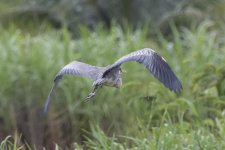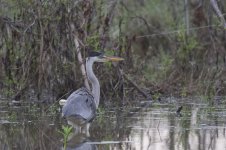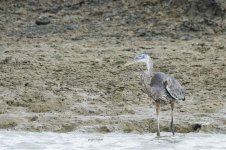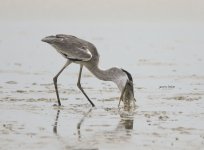Hi All
Saw this heron late this evening (sun was setting hence the softness of the shots). Also note this was after heavy rains most of the day so the bird is wet (we are experiencing rainy season now - it brings a lot of migrants).
- it was smaller than a Great Egret (single shot doesn't show this well but it was near one for a while)
- general impression is a gray heron - neck, chest, thighs etc
- no rufous at all
- dark cap doesn't go below or around lower part of eye
- has black crest plumes which are pretty short
- faint eye streak above
- in flight greater wing & primary coverts look mostly gray
- has the marquee headlights on the carpal/wing bend
- yellow legs
- has streaks of white on the crown
I was thinking an almost-adult gray heron, but realise juvenile cocoi herons are grayish also... cannot find enough images of either juveniles online to make a confirmation.
Saw this heron late this evening (sun was setting hence the softness of the shots). Also note this was after heavy rains most of the day so the bird is wet (we are experiencing rainy season now - it brings a lot of migrants).
- it was smaller than a Great Egret (single shot doesn't show this well but it was near one for a while)
- general impression is a gray heron - neck, chest, thighs etc
- no rufous at all
- dark cap doesn't go below or around lower part of eye
- has black crest plumes which are pretty short
- faint eye streak above
- in flight greater wing & primary coverts look mostly gray
- has the marquee headlights on the carpal/wing bend
- yellow legs
- has streaks of white on the crown
I was thinking an almost-adult gray heron, but realise juvenile cocoi herons are grayish also... cannot find enough images of either juveniles online to make a confirmation.












